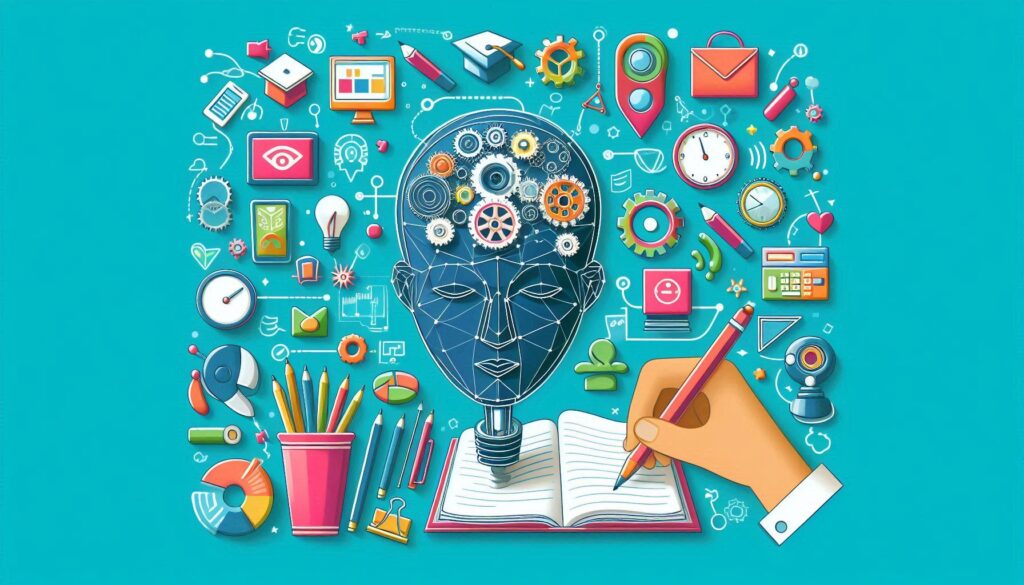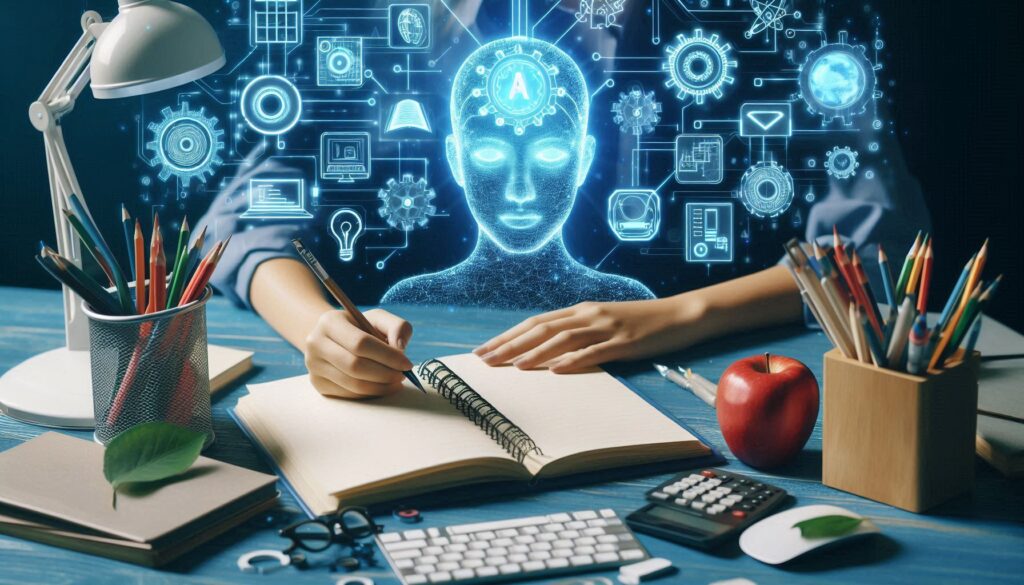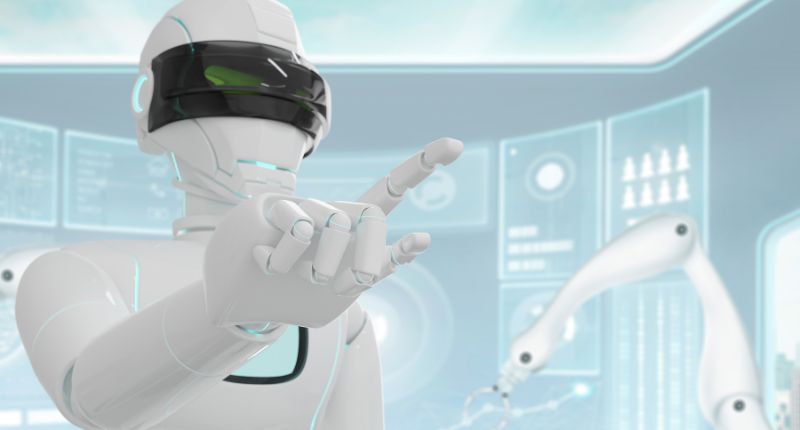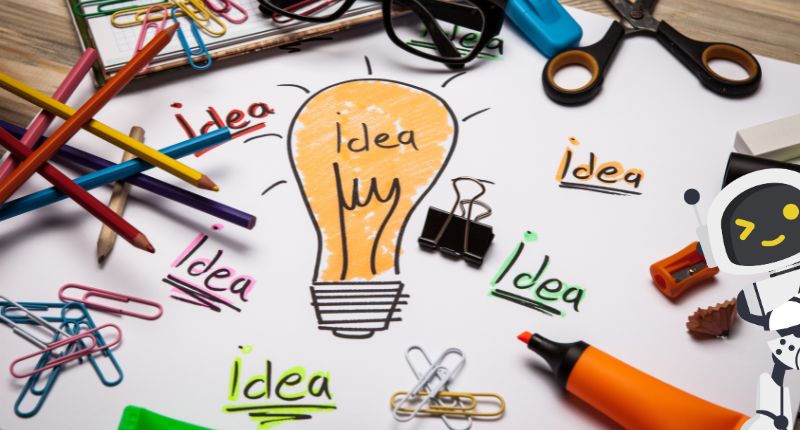How AI is Revolutionizing the Education Sector
Imagine a classroom where lessons adapt to each student’s pace, teachers have real-time insights into learning gaps, and language barriers dissolve instantly. This isn’t science fiction—it’s the reality of today’s AI-driven education landscape.
The integration of technology into education has evolved from simple computer labs to dynamic tools that redefine how we teach and learn. Among these advancements, artificial intelligence (AI) stands out as a transformative force. Let’s explore how AI in education is creating smarter classrooms, empowering educators, and fostering inclusive learning environments.

1. Personalized Learning: Tailoring Education to Every Student
Traditional classrooms often struggle to address individual learning speeds and styles. AI solves this by analyzing data from quizzes, assignments, and interactions to create customized learning paths. Platforms like Century Tech and Knewton use machine learning to identify strengths and weaknesses, offering tailored resources. For example, a student struggling with algebra might receive targeted exercises, while another excelling in grammar gets advanced challenges.
Case Study: Arizona State University partnered with an AI platform to reduce dropout rates. The system flagged at-risk students by analyzing engagement patterns, enabling timely interventions that improved retention by 15%.
2. Automating Administrative Tasks: Empowering Educators
Teachers spend up to 50% of their time grading, scheduling, and managing paperwork. AI tools like Gradescope automate grading for multiple-choice and even essay questions, providing instant feedback. Administrative chatbots handle routine queries about deadlines or course materials, freeing educators to focus on creative teaching strategies.
“AI doesn’t replace teachers—it gives them superpowers,” says Dr. Emma Collins, an EdTech researcher.
3. Intelligent Tutoring Systems: 24/7 Learning Support
AI-powered tutors like Carnegie Learning’s MATHia and Duolingo’s language bots offer round-the-clock assistance. These systems adapt explanations based on user responses, mimicking one-on-one tutoring. In rural India, the nonprofit CGI deployed an AI tutor that improved math proficiency by 27% in six months among underserved students.
4. Breaking Down Barriers: Accessibility for All
AI is a game-changer for students with disabilities. Tools like Microsoft’s Immersive Reader use natural language processing to read text aloud and simplify complex sentences. Sign language recognition software, such as SignAll, translates gestures into text in real time, fostering inclusive classrooms.
Global Impact: In Sweden, AI-driven translation tools help refugee students learn in their native languages while gradually transitioning to Swedish.
5. Data-Driven Insights: Smarter Decision-Making
Schools generate vast amounts of data, from attendance trends to cafeteria preferences. AI analytics platforms like BrightBytes help administrators allocate resources effectively. For instance, predictive analytics might reveal that students performing poorly in science also lack after-school tutoring access—prompting targeted program expansions.
6. Ethical Considerations and Challenges
While AI’s potential is immense, challenges persist:
- Bias in Algorithms: Historical data can perpetuate inequalities. MIT researchers found facial recognition tools struggled to identify non-white students accurately.
- Privacy Concerns: Protecting student data from breaches is critical. The EU’s GDPR regulations now guide AI developers in ethical data usage.
- Digital Divide: Only 60% of rural schools globally have reliable internet, risking exclusion from AI benefits.
7. The Future Classroom: Emerging Trends
- VR + AI Integration: Imagine history students “visiting” ancient Rome via AI-curated virtual tours.
- Emotion Recognition: Cameras analyzing facial expressions could detect confusion or boredom, prompting teachers to adjust lessons.
- Blockchain Credentials: AI could issue tamper-proof digital diplomas, streamlining university applications.
How AI is Reshaping Education: A Deep Dive into the Future of Learning
Picture a world where a student in a remote village receives the same quality of education as one in a metropolitan city. Where teachers spend less time grading and more time mentoring. Where learning disabilities become learning differences, seamlessly accommodated. This isn’t a utopian fantasy—it’s the emerging reality of AI in education, a quiet revolution unfolding in classrooms and digital platforms globally.
From adaptive learning algorithms to emotion-sensing tools, artificial intelligence is dismantling long-standing barriers in education. But this transformation isn’t about replacing teachers with robots. It’s about creating systems that amplify human potential. Let’s explore the tangible ways this technology is making waves.
1. Personalized Learning Paths: Education’s “Netflix Moment”
The traditional “one-size-fits-all” model often leaves students disengaged. Enter AI-powered adaptive learning platforms like DreamBox and Smart Sparrow, which use real-time analytics to:
- Adjust difficulty levels based on performance
- Recommend resources matching learning styles (visual, auditory, kinesthetic)
- Predict knowledge gaps before they derail progress
Impact: A 2023 study by the Gates Foundation found students using AI-driven math platforms progressed 30% faster than peers in conventional classrooms.
2. Teacher’s New Best Friend: Automating the Grind Work
Educators waste 13 hours weekly on administrative tasks (National Education Association). AI is changing this through:
- Automated Grading: Tools like Turnitin’s Gradescope assess essays using natural language processing, flagging inconsistencies and even detecting plagiarism.
- Smart Scheduling: AI optimizes timetables by analyzing classroom sizes, teacher availability, and resource constraints.
- Parent Communication: Chatbots like Edmodo’s AI Assistant translate updates into 100+ languages, bridging communication gaps in diverse communities.
“I’ve regained 8 hours a week since we adopted AI grading,” shares Maria González, a high school English teacher in Texas. “Now I host writing workshops instead of staring at red pens.”
3. Tutoring for All: Democratizing 1:1 Support
With private tutoring costing up to $85/hour in the U.S., AI levels the playing field:
- Carnegie Learning’s MATHia: Provides step-by-step guidance, adapting explanations when students make errors.
- Duolingo Max: Uses GPT-4 to role-play conversational scenarios in language learning.
- Khan Academy’s Khanmigo: Acts as a debate partner, career coach, and coding tutor rolled into one.
Global Success: In Kenya, the nonprofit Elimu deployed AI tutors via SMS, improving national exam scores by 22% in rural schools.
4. Breaking Barriers: AI as an Inclusion Tool
For the 240 million children with disabilities worldwide (UNICEF), AI is a lifeline:
- Seeing AI: Narrates visual content for visually impaired students.
- Otter.ai: Provides live captions with 95% accuracy for hearing-impaired learners.
- Cognii’s Virtual Assistant: Helps neurodivergent students structure essays using conversational prompts.
Innovation Spotlight: Microsoft’s Immerse Reader now supports 80 languages, helping ESL students decode complex texts through interactive visuals.
5. Data Wizardry: Predicting Dropouts Before They Happen
Schools using predictive analytics like BrightBytes’ Clarity have slashed dropout rates by up to 35%. How?
- Tracking 500+ data points: Attendance patterns, cafeteria purchases, library logins
- Flagging early warnings (e.g., declining participation in STEM clubs)
- Triggering interventions: Peer mentoring, family check-ins, tailored tutoring
Case Study: Broward County Schools reduced chronic absenteeism by 18% after AI identified students at risk of disengagement.
6. Ethical Minefields: Navigating AI’s Dark Side
As UNESCO’s 2023 Global Education Monitoring Report warns, unregulated AI risks:
- Bias Amplification: An MIT study found facial recognition systems error rates are 34% higher for dark-skinned females.
- Data Exploitation: 60% of EdTech apps share student data with advertisers (Common Sense Media).
- Over-Reliance: Students using Grammarly’s AI editor showed 15% lower critical thinking skills in long-form writing.
Solutions Emerging:
- The EU’s AI Act mandates algorithmic transparency in educational tools.
- Nonprofits like Data & Society audit EdTech algorithms for fairness.
7. Classrooms of Tomorrow: What’s Coming Next
- AI “Empathy Engines”: Tools like Emotech’s Olly analyze vocal tones to detect student frustration.
- Holographic Teachers: Arizona State University is piloting 3D AI instructors for complex lab demonstrations.
- Blockchain Diplomas: The University of Melbourne issues NFT credentials verified by AI, cutting verification time from weeks to seconds.
Internal Links:
- How VR is Creating Immersive History Lessons
- The Ethics of Student Data Collection: A Parent’s Guide
- How EdTech is Bridging the Global Learning Gap
- The Role of Teachers in an AI-Driven World
External Links (DoFollow):


